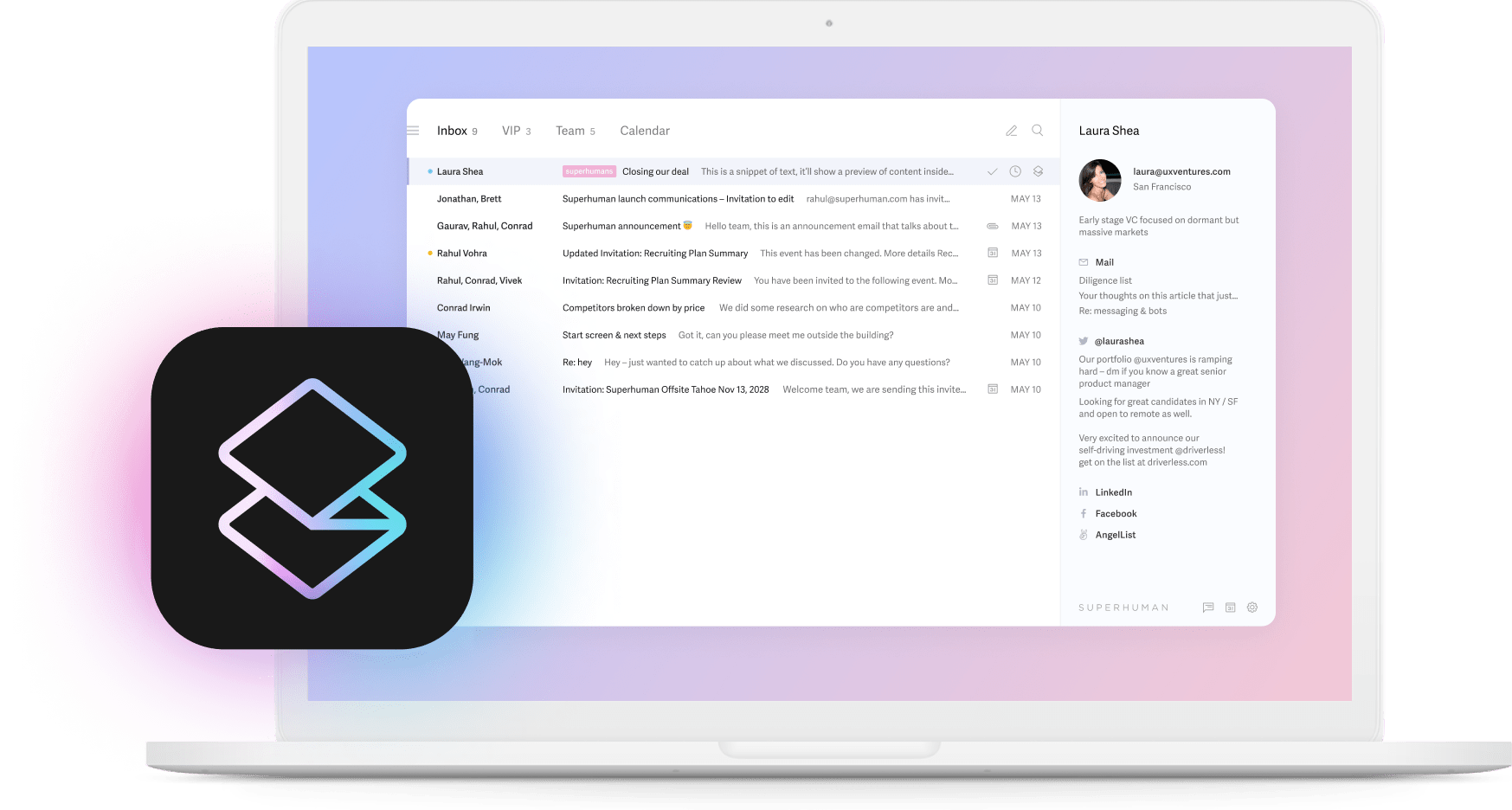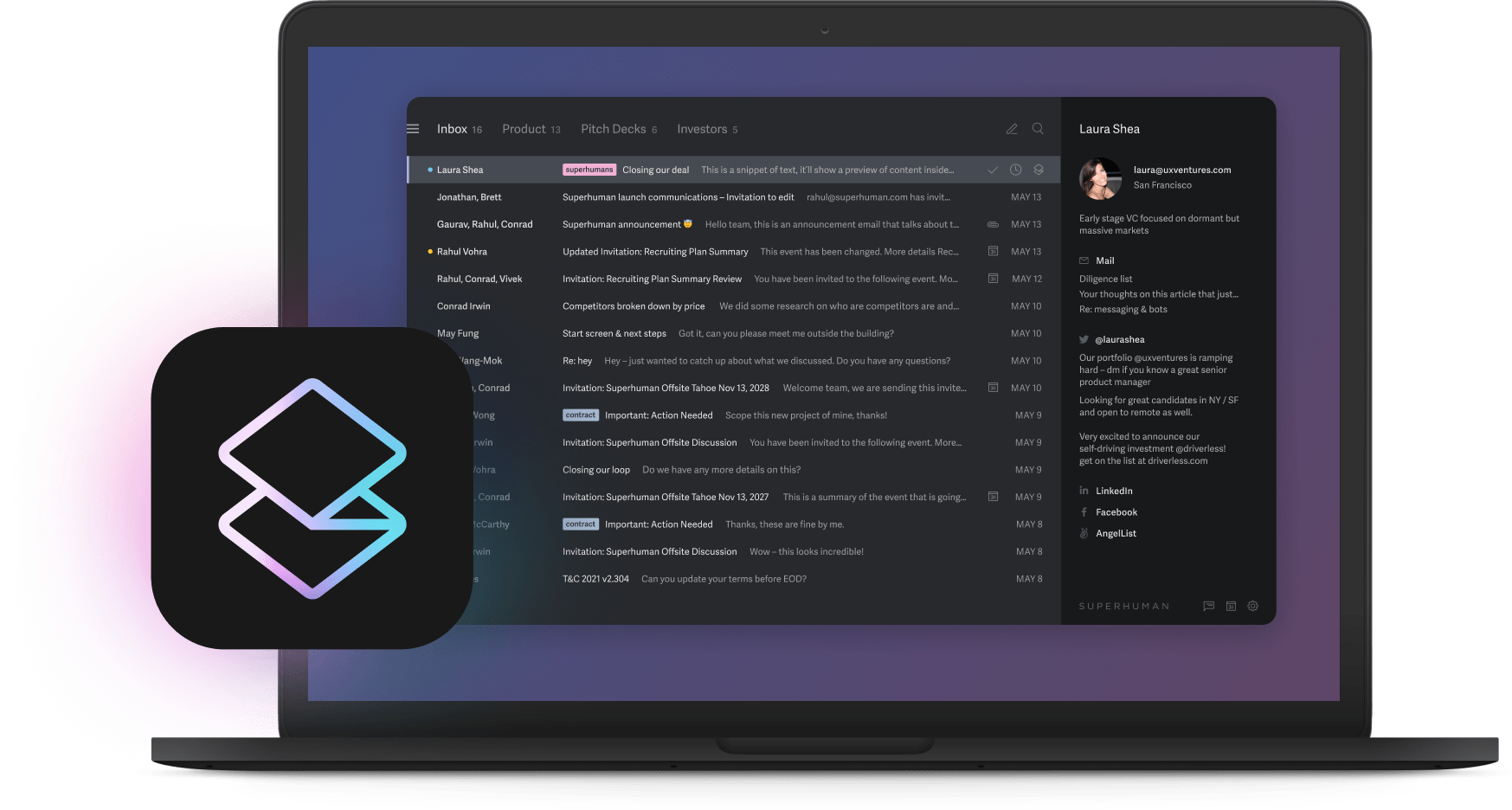
The internet is known for debating over a lot of things. Is the dress white and gold, or black and blue? Is it pronounced "gif" or "jif"? Is a hot dog a sandwich?
And while those debates can certainly get spirited, they're also pretty lighthearted and low stakes. But one of the latest online arguments is one that could actually impact your professional life. The internet can't seem to decide: is it pretentious to send Calendly links?
While many people consider Calendly to be a useful tool that helps them streamline their meeting planning and scheduling process, there's a whole other side of the internet that thinks sending a Calendly link is just plain rude. Which side are you on? Read on to learn all about Calendly and this lively online debate.
What is a Calendly link?
Calendly is a web app that syncs with your Outlook or Google calendar and creates a unique URL that you can distribute to anyone. When they click your link, they arrive on a landing page where they can schedule a meeting time with you based on what's open in your calendar. Calendly will automatically recognize events that are already in your calendar, and only offer the person clicking your link times that you're actually available. And your scheduling page will show all your available times, allowing the recipient to choose the one that works best for their schedule.
Basically, Calendly helps you automate meeting scheduling (as much as something involving two humans with different schedules can be automated).
You can customize your Calendly link, but it usually looks something like this: calendly.com/YourName.
You can also customize your event types and scheduling preferences — say, if you want Calendly to only offer meeting times in the mornings, or on certain days of the week. It will use your calendar to fill in the rest of the blanks about your availability, ensuring that anyone who used your scheduling link to schedule a meeting with you is doing so at a time you're actually free.
When someone schedules a meeting with you via your Calendly page, they'll receive a confirmation email with all the details (including a Zoom meeting or Google Meet link, if needed), as well as periodic reminder emails as the meeting approaches. Either of you can also cancel or reschedule the meeting via Calendly with just a few clicks from one of those emails.
Why do people love Calendly links?
Scheduling meetings by phone or email can be frustratingly inefficient.
Here's an example that will probably look familiar.
You send an email to a colleague saying something like, "We need to meet to discuss the proposal. I'm available Tuesday at 1 PM, Thursday at 11 AM or 2 PM, or Friday at 9 AM."
They respond the next day, selecting Thursday at 2 PM. But by then you've scheduled another meeting with another colleague — during that time slot. So you have to email the first colleague back and start this process over. When you finally nail down a time that works for you both, the other party has something come up at the last minute, so you start over again.
We've all been here. This process takes forever. It's frustrating. It's a hassle.
And it's exactly why so many people love Calendly.
Calendly streamlines the entire process by syncing with your calendar. That means that whenever someone clicks your link, the available meeting times they're seeing are times that you are actually available in real-time. They pick one, Calendly sends you both a confirmation email, and the meeting is scheduled — just like that.
Why do people hate Calendly links?
Calendly is another time-saving tool that many people obviously need. So what's up with the debate over it?
Well, the latest online argument (no, it's not the first) began a few months ago when Sam Lessin, a former VP at Facebook, tweeted a post about how Calendly is "The Most Raw / Naked Display of Social Capital Dynamics in Business".
‘Calendly’ Etiquette is The Most Raw / Naked Display of Social Capital Dynamics in Business. pic.twitter.com/GEdYj6J6Rt
— sam lessin (@lessin) January 26, 2022
While Sam concedes that Calendly is useful for busy people, he makes this argument:
"When someone sends you a calendly link and asks you to slot yourself on their calendar, they are telling you that you are less important than them / and that ALL of their current meetings are 'more important' than whatever you need them for - it is a 'get in line' move".
Sam goes on to say that the only person whose Calendly link he would ever click is the President of the United States' (and even then, only maybe).
"The reality is that to properly schedule we both need to look at everything going on, evaluate relative importance of different meetings vs. whatever the issue at hand is, and then mutually shift calendars to work. So, look, when a negotiation is totally nakedly one sided Calendly is fine… But just be clear about the social message I receive from you of your asserted sense of self worth when you send me that link".
Naturally, Sam's post sparked a big debate — and not just because there's not really any such thing as a completely one-sided negotiation. The internet is full of people who love Calendly — and people who hate it, whether that's for the same reasons as Sam or reasons of their own.
Summary: I get offended when someone sends me a link to pick a time that best suits both of us.
— Manujaya Sri ✌ (@0xManujaya) January 27, 2022
Felt this on a deep, deep level! How many times ppl connect via LinkedIn asking 4 MY time (can you review?/pick your brain?/refer me?/interested in?") and the off chance I answer, am met with "Great! Here's my Calendly..." Nah fam, I'm good.
— Courtney P. Benjamin, Ph.D. (@CBFraser66) January 27, 2022
Send me a calendly. Send me your EA. Screenshot your calendar. I don’t care. I just don’t want to do the painful 4 email dance of arriving at a time we can talk.
— Allison Braley (@allisonbraley) January 27, 2022
It's also important to note that this debate didn't start with Sam Lessin — he just reignited it. This is, in fact, something the internet has been arguing about for years.
🌶 Take: people who get offended by Calendly links tells you more about their ego and feeling of self importance than an debate over meeting scheduling etiquette.
— Jason Evanish (@Evanish) December 15, 2019
So is it pretentious to send Calendly links?
This online debate is clearly still raging, and we're not here to settle it. You should use Calendly if it's an effective tool for you, but be aware that some people on the receiving end of your invites might have less-than-warm feelings — or even be put off by receiving a link.
With that in mind, here are some tips on how to use Calendly while keeping the experience as positive as possible for everyone.
How to use Calendly without rubbing people the wrong way
After reading a lot of the recent social media debate, we've determined that most of the people who take issue with Calendly feel negatively about it because it depersonalizes the meeting scheduling experience. It feels cold — clinical, almost. They start to feel more like cogs in your busy schedule than actual humans, and that's understandable — no one wants to feel that way!
I believe in professional yet personal, authentic connections and Calendly sends a transactional/recruiter vibe - especially when they send slots to pick. I've never have a second meeting with anyone that's scheduled a calendly meeting with me. Not wrong, but not for me.
— Sindhu Narasimhan (@sinequanon87) August 21, 2019
So with that in mind, these tips can help you use Calendly while making the process warmer, more personal, and more inviting (pun fully intended).
Personalize your Calendly account.
If people take issue with Calendly feeling cold and impersonal, the first step should be to personalize it as much as you can. Make sure your Calendly page includes a profile photo. And treat the automated messages that get sent out about Calendly events as templates — you can and should personalize them so they sound more like you, instead of a computer. Send a follow up to the confirmation email if you're excited about the meeting. You know, just be more human about it all.
Never send a cold Calendly link.
Calendly may not be the best tool to use when you're scheduling a meeting with someone for the very first time. When you're recruiting or prospecting, sending someone a cold Calendly link makes the process feel especially, well, cold.
You should also avoid Calendly if you're asking someone for a favor. For example, if you reach out to someone on LinkedIn asking for their time and follow it up with a Calendly link that says, "Schedule a time on my calendar", it can send the message that you're too busy or too important to take the time to schedule a meeting — with someone you're asking something of. That's not a good look.
Use Calendly for specific events.
A Calendly link may come off the wrong way when you use it for all your meetings. Instead, be intentional about when you use Calendly, versus when you take the time to schedule a meeting personally.
Offer Calendly as just one choice.
Another great way to make Calendly feel more personal is if you offer it to the recipient as a choice. For example, send them an email with a couple of times when you're available for a meeting, and then add, "If those don't work for you, my Calendly has an up-to-date list of other times you can choose from."
You can also add your Calendly link to your email signature. This way, it's there for recipients who want to use it, but the rest can ignore it and book meetings in their preferred way.
Alternatively, share your Google Calendar publicly. Anyone with your email address can view your calendars easily.
Optional Reading:
Frame it to be about the recipient.
One of the things that people seem to find so off-putting about Calendly is how it makes the scheduling process all about the sender. You schedule a time on my calendar, it seems to say. That's not always an appropriate way to approach meeting scheduling — hence the debate.
Instead, reframe the way you send your Calendly link. Make it about the recipient's time, not yours. Adding a note with your link that says something like, "My Calendly is available for you to choose a time that's convenient for you, if you'd like." This helps make it more clear that you aren't using Calendly because you're too busy to schedule a meeting with the recipient, but out of respect for their time.
Are there any alternatives to Calendly links?
Other types of meeting scheduling software (like AI assistants, for example) get criticized for the same reasons as Calendly — they also feel impersonal. Unfortunately, that might just be the reality of most scheduling tools; while they help make the process more efficient, they remove certain human touches from the process that are important to some people.
One of the best alternatives to Calendly is learning how to quickly send effective emails. For example, instead of sending an email asking a colleague when they're available to meet, take charge and be specific and thorough in your initial email. Something like this:
Hello,
I'd like to meet with you to get a project update on the field report you're working on. Can we schedule a 30-minute call?
I'm available Tuesday from 11 AM to 1 PM, Wednesday from noon to 2 PM, or any time Thursday after noon.
Feel free to send me a calendar invite if any of those times work for you.
Looking forward to meeting!
Just like that, instead of a tedious, back-and-forth scheduling dance, your meeting can be scheduled in just one email. Plus, with Superhuman's See Your Week feature, you can use a quick keyboard command to see your entire week and suggest all the meeting times that work for you.
NEW: See Your Week 📅
— Superhuman (@Superhuman) February 3, 2022
First they'll ask, "When are you free?"
Next thing you know, you're out of your inbox and out of flow.
But not anymore! Now with Superhuman, you can instantly see your week and find the perfect time to meet. pic.twitter.com/FrFOGa22SQ
Superhuman isn't a direct replacement for Calendly — but it can act as a workaround to help do what Calendly was meant to: eliminate email back-and-forth and make scheduling meetings easier and more efficient.
Ready to see for yourself? Try Superhuman today.




